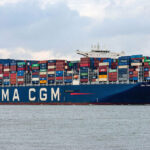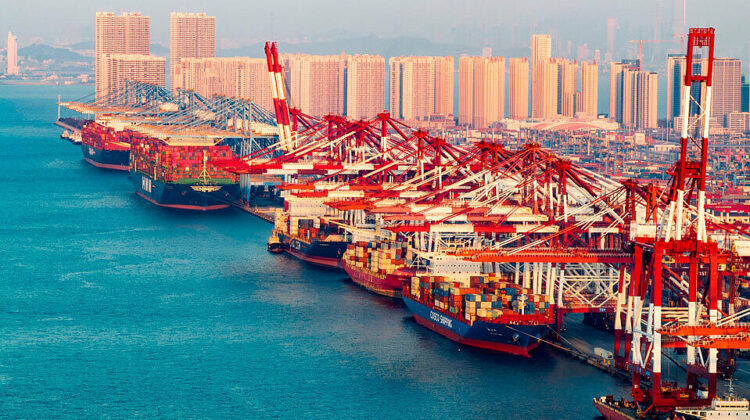
Carriers want to raise Asia rates again
16.05.2025
Trade Far East – Northern Europe: Rates explode
16.05.2025Sea Freight Flash: Rates at New Annual High
As a result of the recent rate increases, booking activity in the market is accelerating. Customers are therefore striving to ship as much cargo as possible at more favorable contract rates, which is further driving up current vessel utilization. Departures from the Far East to Europe are now reportedly fully booked for several weeks.
Ships en route from the Far East to Europe are currently full, and departures are reportedly fully booked for several weeks. (Photo: picture alliance / empics | Joe Giddens)
May 13, 2024 | by Michael Hollmann
The rate increase in the sea freight market is accelerating. Following the recent rate increases (GRI), the price level for shipments from the Far East has climbed to a new annual high, according to the Shanghai Index. The market barometer, which tracks spot rates for 13 routes ex Shanghai, jumped by almost 19 percent to over 2,305 points at the end of last week. This significantly surpasses the previous high of 2,239 points reached in mid-January.
The recent increases are fairly evenly distributed. On the routes from the Far East to North America and to Europe, index rates increased between 19 and 25 percent. For bookings to the European North Range ports, the average spot rate is now estimated at $2,869/TEU. The liner agents and logistics experts surveyed for the SCFI also reported significant gains in the smaller westbound trades from China to Africa and the east coast of South America. Rates are now being recorded there at levels not seen in around 18 months.
The latest cargo data for March and the Purchasing Managers’ Indices for April paint a slightly positive picture for transport demand. Market reports indicate that booking activity has accelerated in the wake of the recent rate increases. Customers are keen to ship as much cargo as possible at more favorable contract rates, further driving up current vessel utilization. Departures from the Far East to Europe are now said to be fully booked for several weeks, with an easing of the situation not expected until June at the earliest. Whether this will happen remains to be seen. The seasonally strong months are only just beginning – in intra-Asia business and then in exports to Europe and North America. All indicators point to container liner shipping once again reaching its capacity utilization limit, especially because the long detours around the Cape of Good Hope are tying up so much more cargo space due to the crisis in the Middle East.
Maersk recently warned that the changed routing, coupled with delays and port handling bottlenecks, could deprive Asia-Europe traffic of 15 to 20 percent of its total slot capacity in the second quarter. Additional ships can hardly be mobilized anymore. And if they can, it will only be at the expense of other trades. According to the latest trailer statistics from Alphaliner, the container shipping fleet segment remains at full capacity. An additional problem is that the expansion of the fleets through newbuildings is progressing more slowly than planned. According to the Maritime Overview Report by the Hamburg-based shipping company Peter Döhle, Asian shipyards delivered 86 container ships with a total capacity of almost 460,000 TEU in the past six months. This means that the completion of more than one in four newbuilds has been delayed. Döhle suspects that the shipyards have overextended their capacities during the order boom of the past two years.
Of course, the tide could suddenly turn if there is a political solution to the Gaza conflict and the Houthi rebels in Yemen cease their rocket attacks on merchant shipping in the Red Sea. However, the prospect of a rapid normalization of the situation, coupled with the return of liner services to the Suez route, is becoming increasingly slim. Carriers are increasingly preparing for a continuation of the diversions. This is also evident in changing charter strategies. Despite the massive increase in charter costs, the lines now frequently contract chartered vessels for two years, sometimes with delivery well into the second half of the year. They can no longer shake off this tonnage in the short term, even if liner services return to their old modus operandi and many ships become redundant. (alb)



